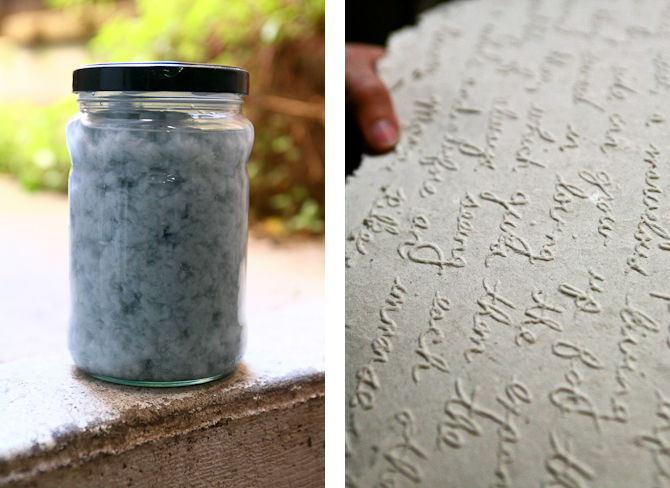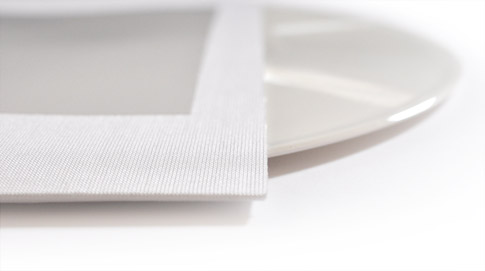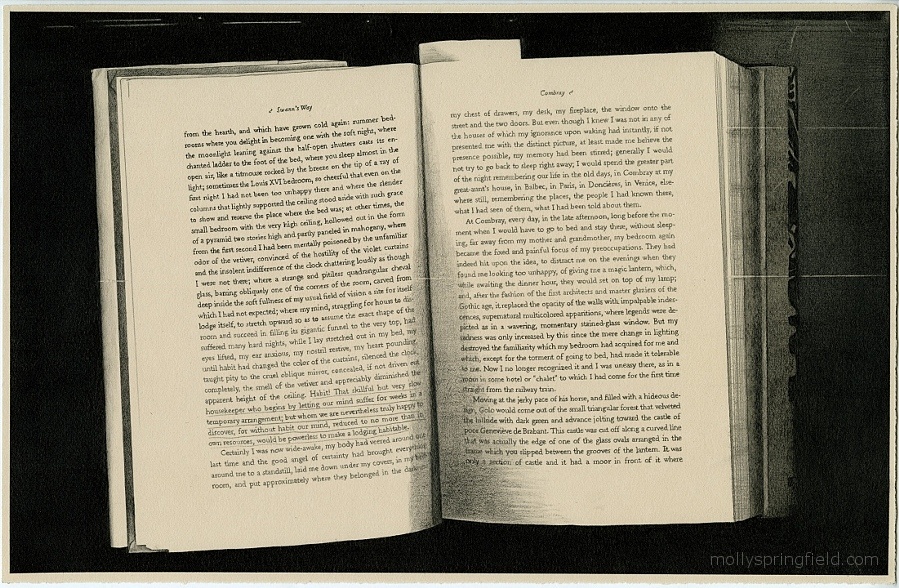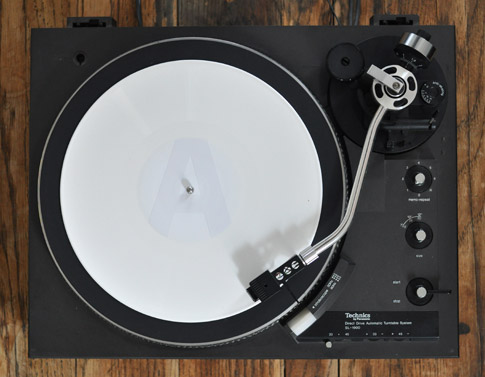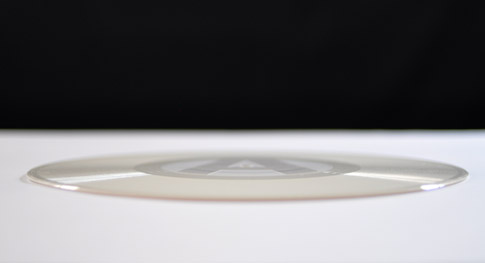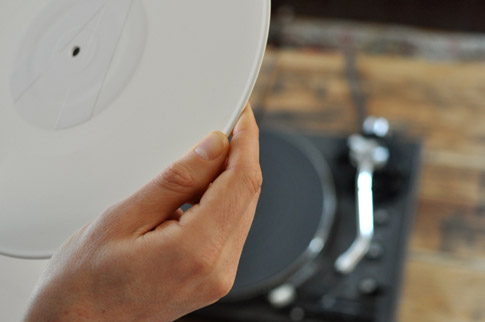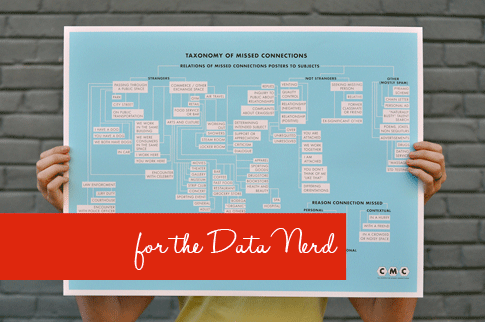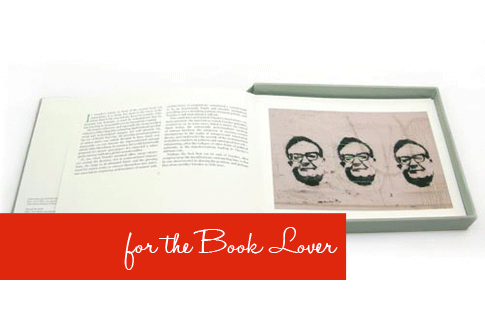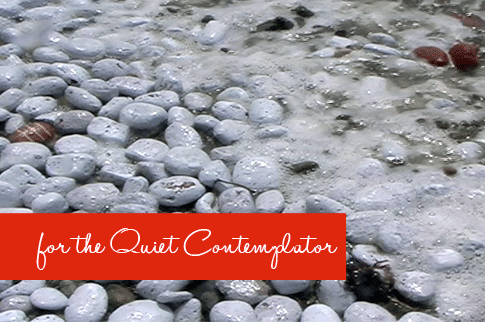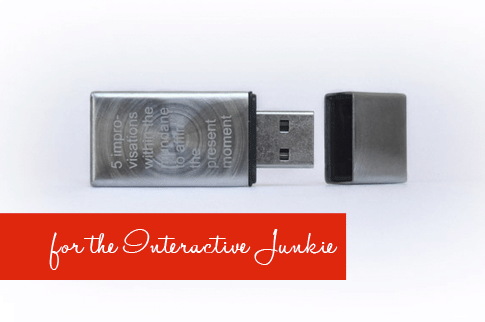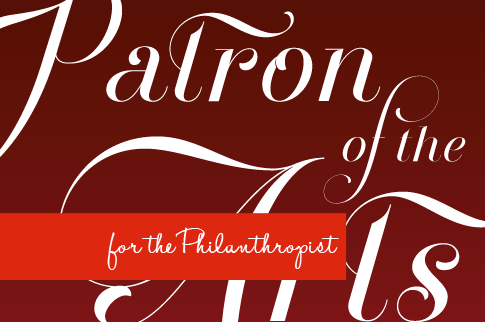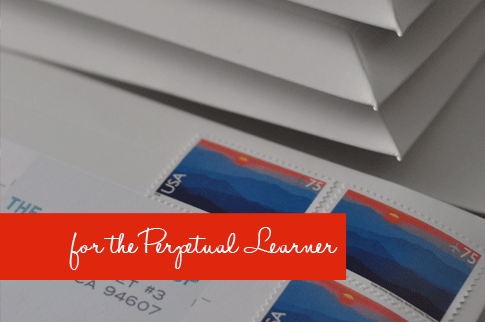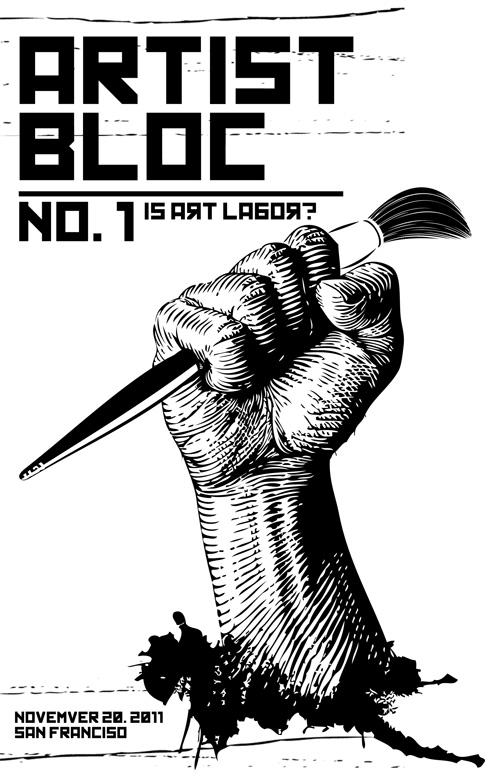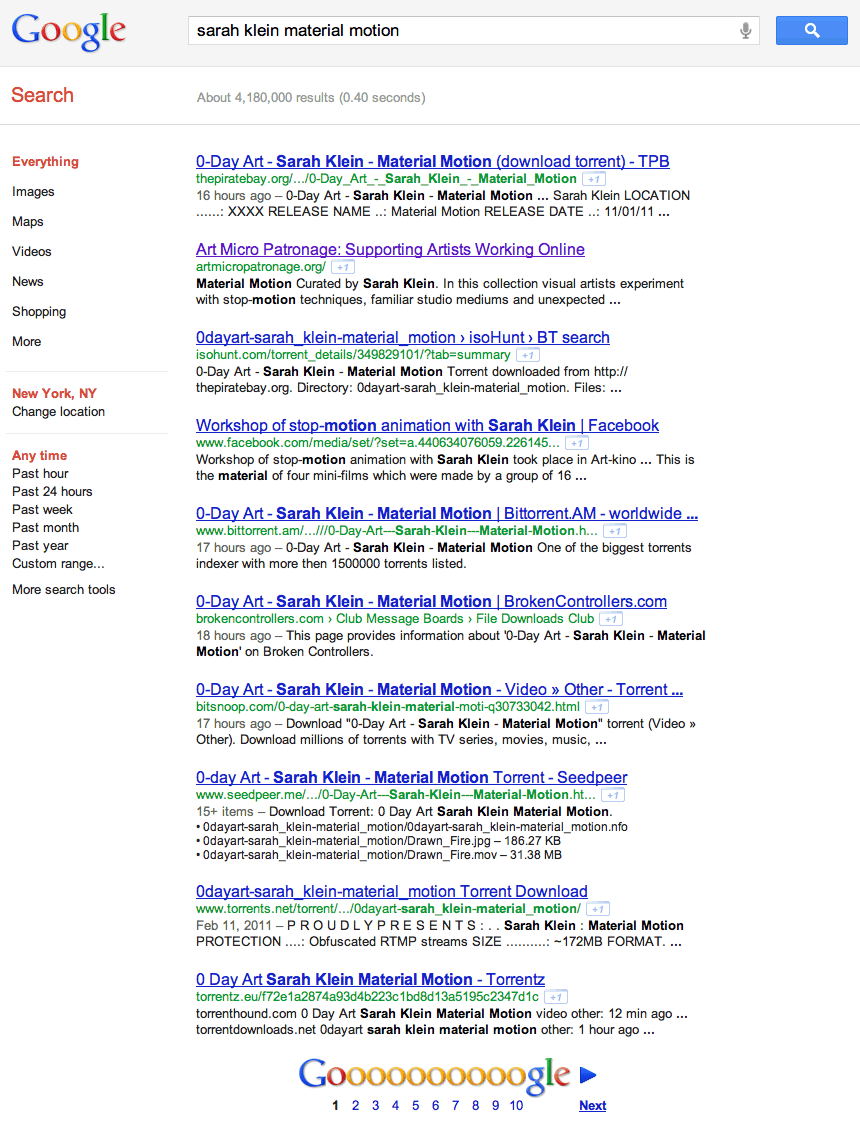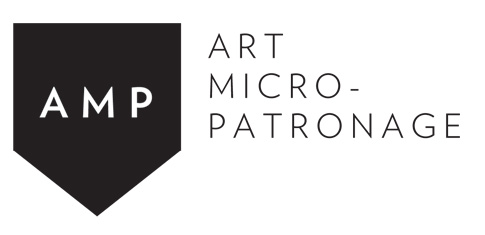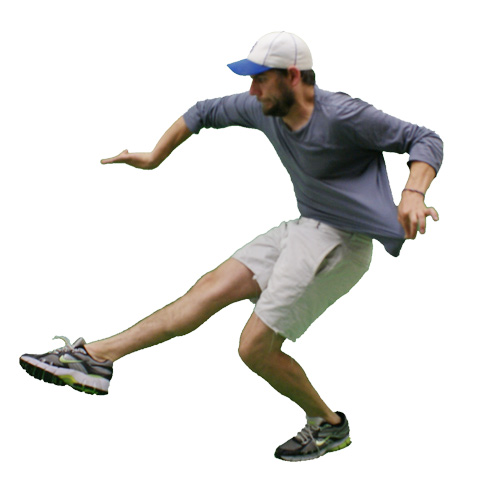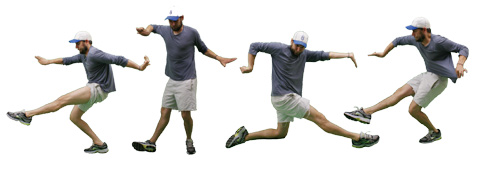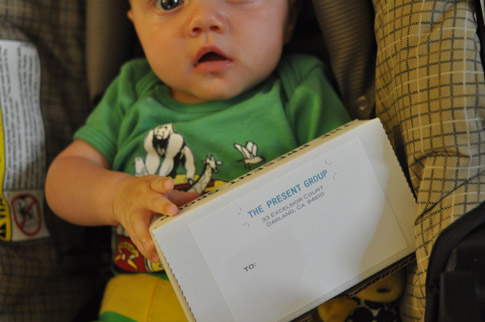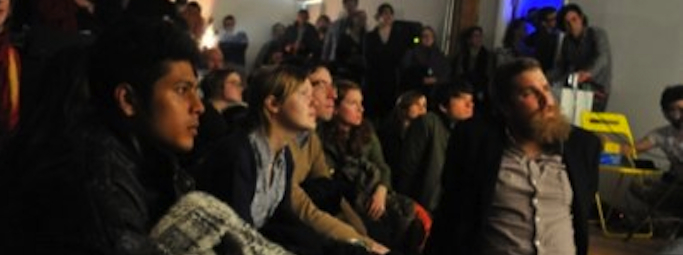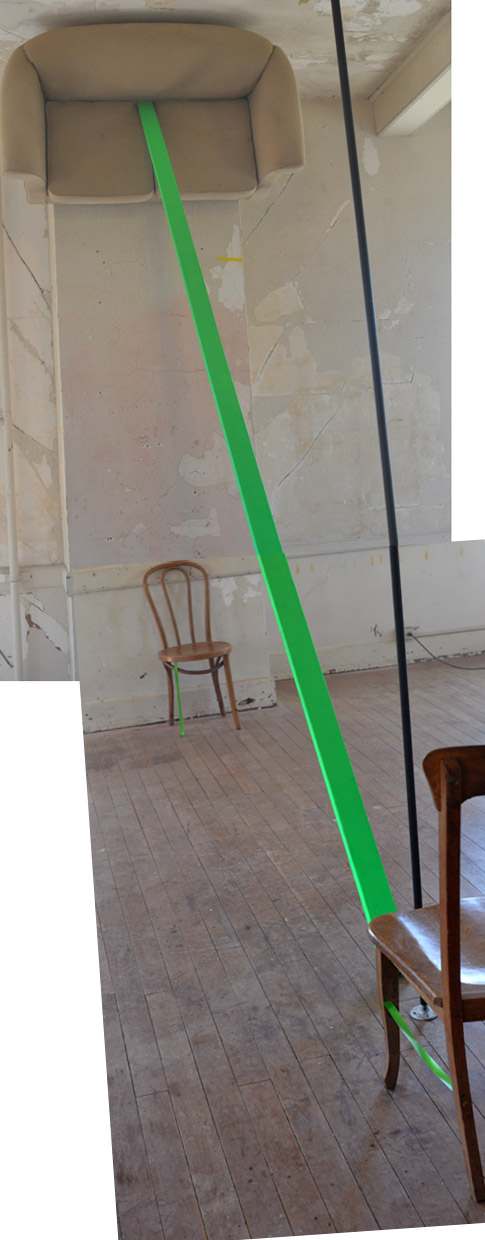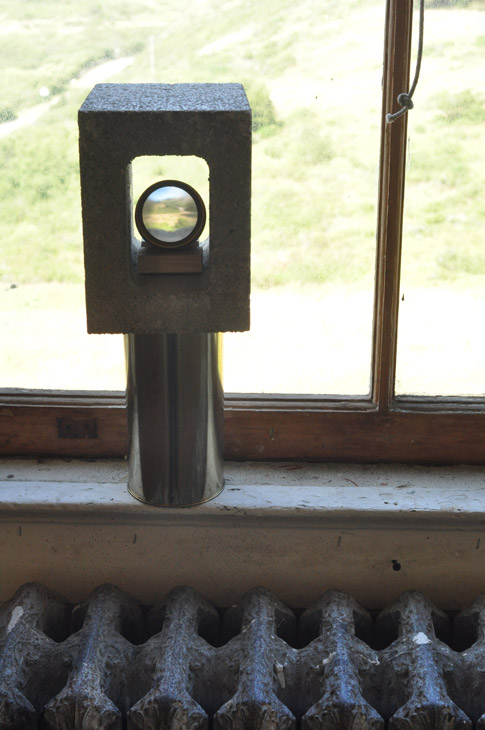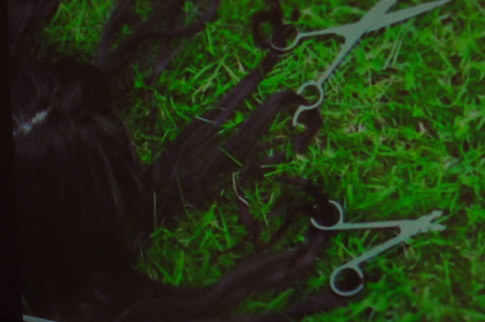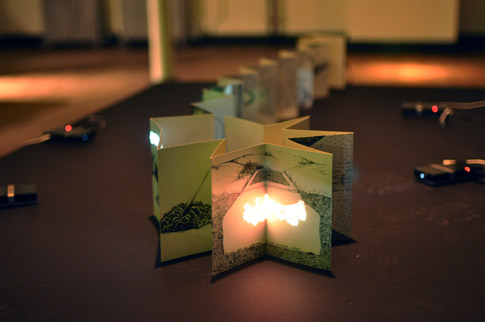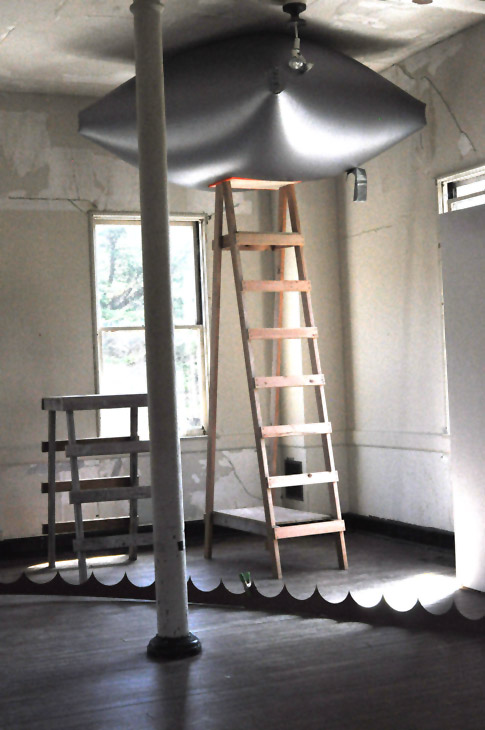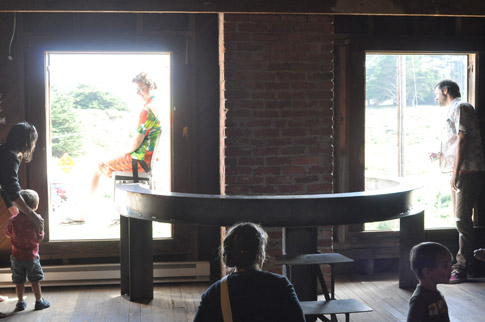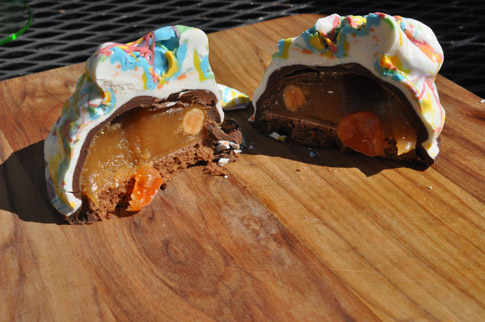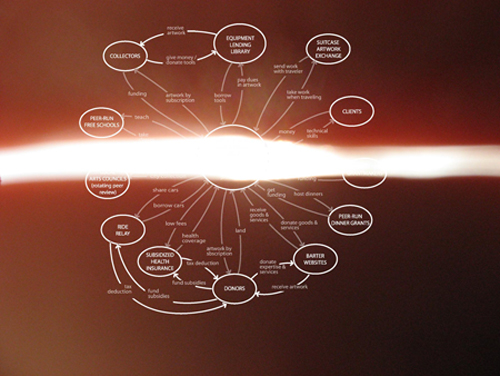The questions that emerge when watching multiple, virtual Aaron GMs perform in the spaces of an apartment are those I might ask when attempting to understand a stranger speaking and gesticulating in a foreign language. What is he trying to convey, if anything? Why? What relationship do his words, or murmurs, have with the space he inhabits, and to his movements?

With tight, fluctuating hand gestures and repetitive spoken words, Aaron is seen busily occupying five areas of a domestic interior. He seems to be mapping out a kind of disjointed narrative on a kitchen surface, on blank walls and in the air, with some degree of urgency. This is not, however, a story of any linear kind. Instead, Aaron lists and repeats words, in a monotone, and, maddeningly, the narrative goes nowhere. The interactive feature doesn’t help. Viewers, by moving their cursors to the right or left of the screen, can navigate a circular path around the apartment to observe Aaron perform in the five spaces he occupies. Investing viewers with agency further confounds the expectation of locating some narrative progression, making the experience all the more circular.
At times, Aaron has an aspect redolent of an obsessive compulsive, or a malfunctioning robot, reduced to a limited repertoire of physical and linguistic vocabulary. Yet, there is also a sense of intense concentration, of careful method and study to Aaron’s actions. The inclination to subject these collections of human expressions to some order is, for me, irresistible. It is tempting, too, to grasp for familiar media that the performer’s body language recalls. The precision and restraint in the movement of his hands, for instance, conjures sign language, or the art of mime. I imagine a round red ball will materialize between his fingers fleetingly and disappear again. By the couch, he employs a leg to create sculptural spaces, thereby adding another layer to the expression of his voice and hands. But Aaron’s work ultimately defies categorization. After a long period of time struggling to discern patterns in the video, it occurred to me that there might be no narrative here at all—that Aaron’s actions are not an effort to communicate with his audience through any known language.
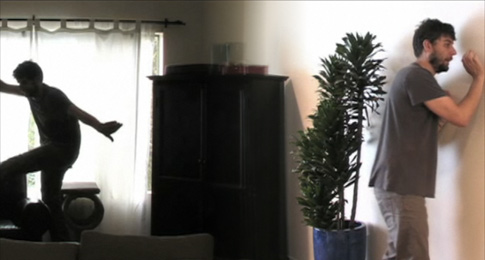
Indeed if there is a conversation underway here, Aaron is having it with himself. Viewers are silent witnesses to the performer’s outward expressions of internal thought processes. The nature of these expressions suggests the workings of an unconscious mind: his speech takes the form of unorganized and repetitive (and sometimes undecipherable) references and fragmented phrases. In other words, the kind of unmitigated and mundane references and images I find myself scrawling onto a page through automatic writing. In the corridor, for example, Aaron lists a hodgepodge of celebrity names (“Mena Suvari”), brands (“Tylenol,” “Sprint”), television programs (“Entourage”), media-popularized phrases (“trickle-down effect”) and abstract images (“invisible string”) among many others. In the kitchen, Aaron is fixated on describing (what sounds like) a “walk”. The word is repeated over and over again in slightly different phrasal variations. At the same time, his hands negotiate the spaces around him thoroughly, using them as reference points for his nonsensical narrative.
Through this outpouring of everyday references, Aaron’s words absorb weight (not in the sense of meaning, but in the sense of physical presence) and rhythm. With every repetition, the words become less and less meaningful, and take on a material quality of their own. Aaron’s actions are, perhaps, best approached as a multilayered inquiry into human interaction with space; using his body and his voice, Aaron creates space, acts on it, measures it, inhabits it, brings textures to it. He bounces words and sounds off walls and surfaces, and uses his hands to frame and define them, as though to affirm proof of their physical presence. This is where Aaron’s title springs to life. Using his voice to draw forms and reinforcing them with corresponding movements, the artist effectively employs his body to assert the present moment.

The ubiquity of Aaron’s references matches the ordinariness of the apartment setting he inhabits. If we accept (as hard as it is to do), that his words don’t contain meaning, just as we cannot draw any intellectual sustenance from the commonplace white walls and modern furnishings of the apartment, we can begin to approach Aaron’s actions simply as the building of shapes with his arms, and legs, and voice. By using the tools of language to occupy and create space, viewers may fall prey, as I did, to the urge to decode Aaron’s unfamiliar mode of expression through traditional channels of communication. The artist challenges us to unlearn, for a few moments, the trappings of language, and find the message in the medium. Liberated from the cognitive processing of language, I found something far more stable: the tangible, physical occupation of space.
Tess Thackara is Senior Reviews Editor at
Art Practical, an online arts journal to which she also contributes writing. She holds a BA degree in English Literature from Trinity College, Dublin, and has completed internships at Phaidon Press, and McSweeney’s—where she contributed research to Dave Eggers’s creative nonfiction work, Zeitoun. Her photography has been exhibited in London, and she recently produced
a short documentary film about artists Richard and Judith Lang.
